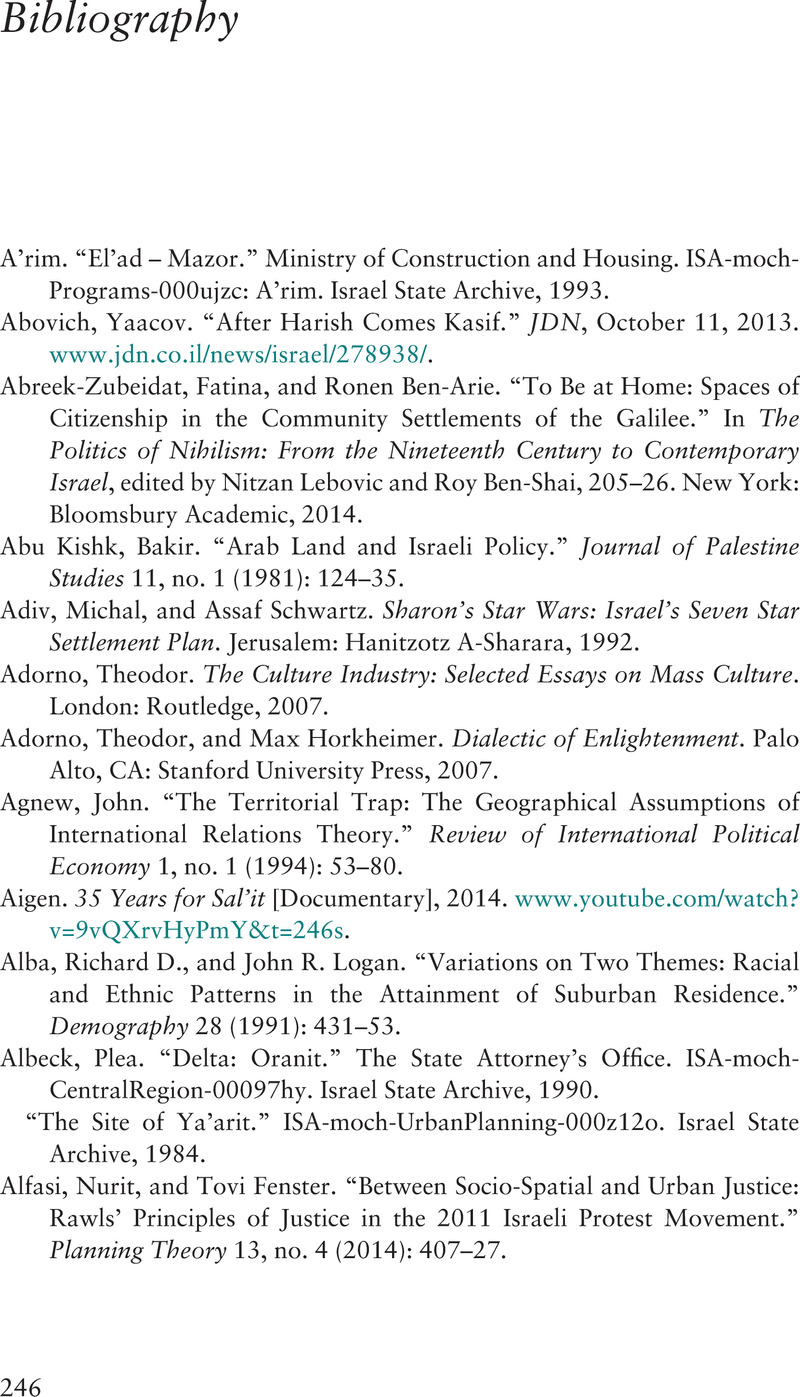Book contents
- Dwelling on the Green Line
- Dwelling on the Green Line
- Copyright page
- Epigraph
- Contents
- Figures
- Preface
- 1 Introduction
- 2 Background
- 3 (Neo-)Ruralization and the Community Settlement
- 4 Gentrification and the Suburban Settlement
- 5 Mass Suburbanization and the Stars Settlements
- 6 Financialization and Harish City
- 7 Conclusions
- Bibliography
- Index
- References
Bibliography
Published online by Cambridge University Press: 23 March 2022
- Dwelling on the Green Line
- Dwelling on the Green Line
- Copyright page
- Epigraph
- Contents
- Figures
- Preface
- 1 Introduction
- 2 Background
- 3 (Neo-)Ruralization and the Community Settlement
- 4 Gentrification and the Suburban Settlement
- 5 Mass Suburbanization and the Stars Settlements
- 6 Financialization and Harish City
- 7 Conclusions
- Bibliography
- Index
- References
Summary

- Type
- Chapter
- Information
- Dwelling on the Green LinePrivatize and Rule in Israel/Palestine, pp. 246 - 272Publisher: Cambridge University PressPrint publication year: 2022



